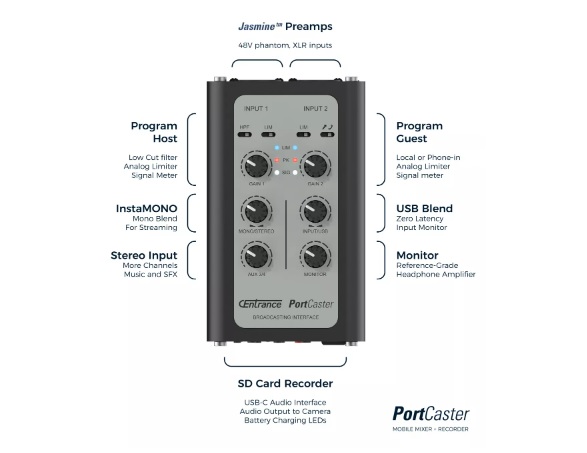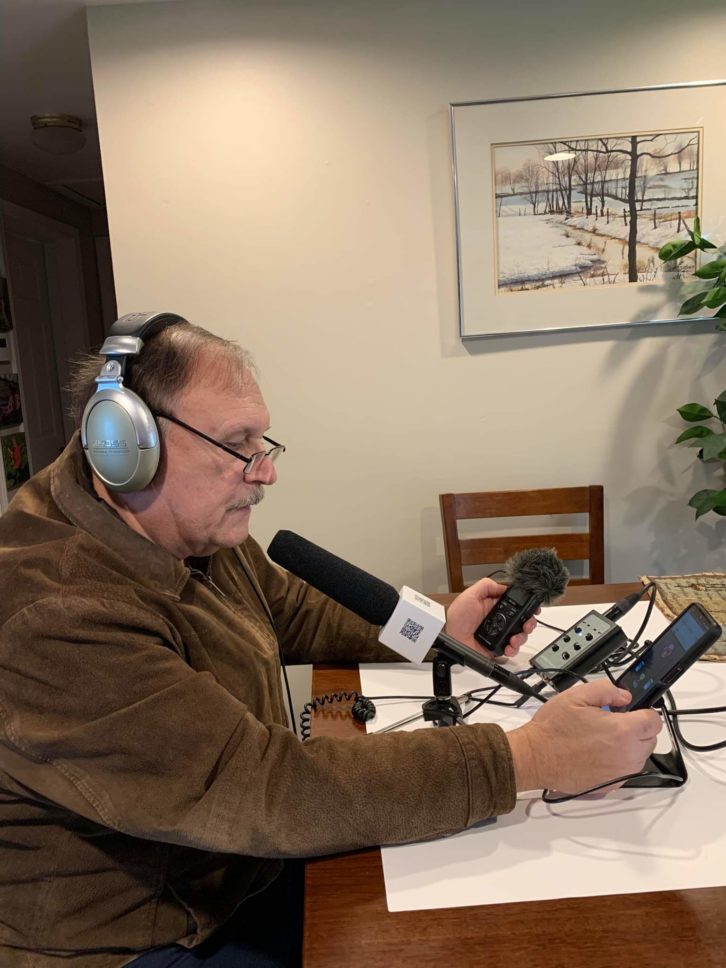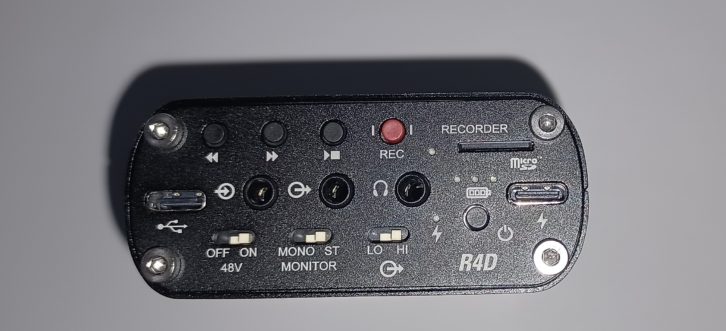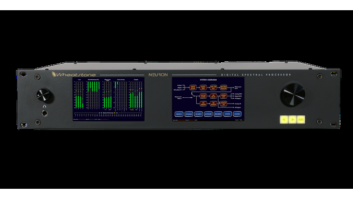The CEntrance PortCaster has a small footprint with big audio production capabilities. So much so that it can replace separate preamps, limiters, USB audio interfaces and phone patches with a little box that can be held in the palm of a hand.
That box will produce the kind of audio that once took a room full of equipment to accomplish.
The product was introduced during the pandemic as a portable live-streaming and recording tool for podcasters and radio program hosts who want to add music, effects and a local or remote call-in guest to their “talk radio”-style show.
It is based on the MixerFace, the company’s mobile recording interface.
“The original MixerFace featured a rechargeable battery and turned any smartphone into a portable live-streaming device with 24-bit/192 kHz audio quality,” the company wrote. “As more customers began using MixerFace to create talk shows, they requested an easy way to add a live caller. With PortCaster, CEntrance added this ability, complete with the Mix-Minus feature used by radio stations to prevent annoying audio feedback for the caller. Remote guests can be on a cell phone or VoIP.”

The basics
The PortCaster in its aluminum case measures about 1-1/4 by 2-3/4 by 4-1/2 inches and weighs in around 10 ounces. It’s tapped and drilled to fit on a small photo tripod, to save space where necessary.
This unit uses USB-C connections for signal and for power. A USB-C to USB-A connector is included.
The manufacturer says the PortCaster can be connected to a charger with no ill effect as long as the charger will output 5 volts at 2.1 amps. The literature suggests a charge will last around 8 hours. Three LEDs indicate battery status; they all flash intermittently when the battery charge depletes to 3%.
PortCaster has three inputs. Two are XLR-F mic inputs with optical limiters, Jasmine preamps and 48 V phantom power; one of those (Channel 2) is switchable to a TRRS jack for a smartphone connection. The Channel 1 input has a high-pass filter to cut thumps and rumbles. A third 1/8-inch TRS jack for Channels 3 and 4 can be connected to an aux input, like the output from an audio recorder.
The unit has three outputs, the first of which is through a USB-C connection to the device (smartphone, desktop or laptop), which allows it to be used as a USB interface for a DAW program. The second output is a mix-minus connection via the TRRS jack to a smartphone or in the case of an iOS device, the proper headset adapter for that style of smartphone. The third output is an 1/8-inch TRS jack, which could be connected to a line input.
In a pinch, the PortCaster could be used as a mic channel strip, taking advantage of not just the 48V phantom power and the Jasmine preamp’s 65 dB gain, but also the optical analog limiters.

Recording and more
The PortCaster includes a micro SD audio recorder that works independently of the other outputs. It records 24-bit/48 kHz stereo audio. The PortCaster can mix down to mono, for some streaming apps.
With a TRRS patch cord, the PortCaster can record from a smartphone equipped with a headset jack (or adapter to TRRS, for iOS devices) and send a mix minus signal back to the phone.
For example, a feed with a local mic, a remote contributor via smartphone, and sound from a local (aux input) recorder could be sent via the USB-C connection and to the onboard recorder at the same time.
The mix-minus feed would include the local mic and sound from the local (aux input) recorder. It’s generated from the PortCaster’s monitor feed. Because the recorder and USB interface work independently, making a copy of a session takes one press of the record button. The USB interface bit and sample rate can be set independently from that of the recorder.

Handy to use
CEntrance has testimonials from musicians and voiceover artists on its website. Good recommendations, those, but I needed to see how the PortCaster would work when I had to record an episode of “Radio-Road-Test” for my weekly feed.
I used a very simple setup: an Audio-Technica AT897 short shotgun mic and Koss Pro4AA headphones. Once a level was set, I recorded to the onboard recorder, then imported the recording from the PortCaster into Audacity for editing. The PortCaster drove the headphones easily; the audio was clear, clean and robust.
The PortCaster is designed to produce professional-grade audio in any situation. If one is doing a simple live shot over a smartphone, it’s easy to send audio using the cell network. Once connected via USB-C, one can send audio using a web-based browser like Cleanfeed, or sending audio using proprietary apps from Luci Live, Comrex and Tieline, for example. The onboard recorder can make telephone interviews easy. Recording a two-mic podcast would similarly be easy, whether using the PortCaster as a USB audio interface to a laptop, or recording to its onboard audio recorder.
CEntrance sells the PortCaster for $549.99 direct from its website and through audio and broadcast dealers. Available accessories include a pair of mics that will plug into the XLR inputs, thus making the PortCaster a handheld recorder.
The PortCaster has been described by other users as a “Swiss Army knife for audio.” I’d call it a pocket-sized production studio that gets professional results. In fact, the only drawback for me was my wish that CEntrance had this available 15 years ago.
To learn more, visit the CEntrance website.
[Check Out More Product Evaluations in Our Products Section]







